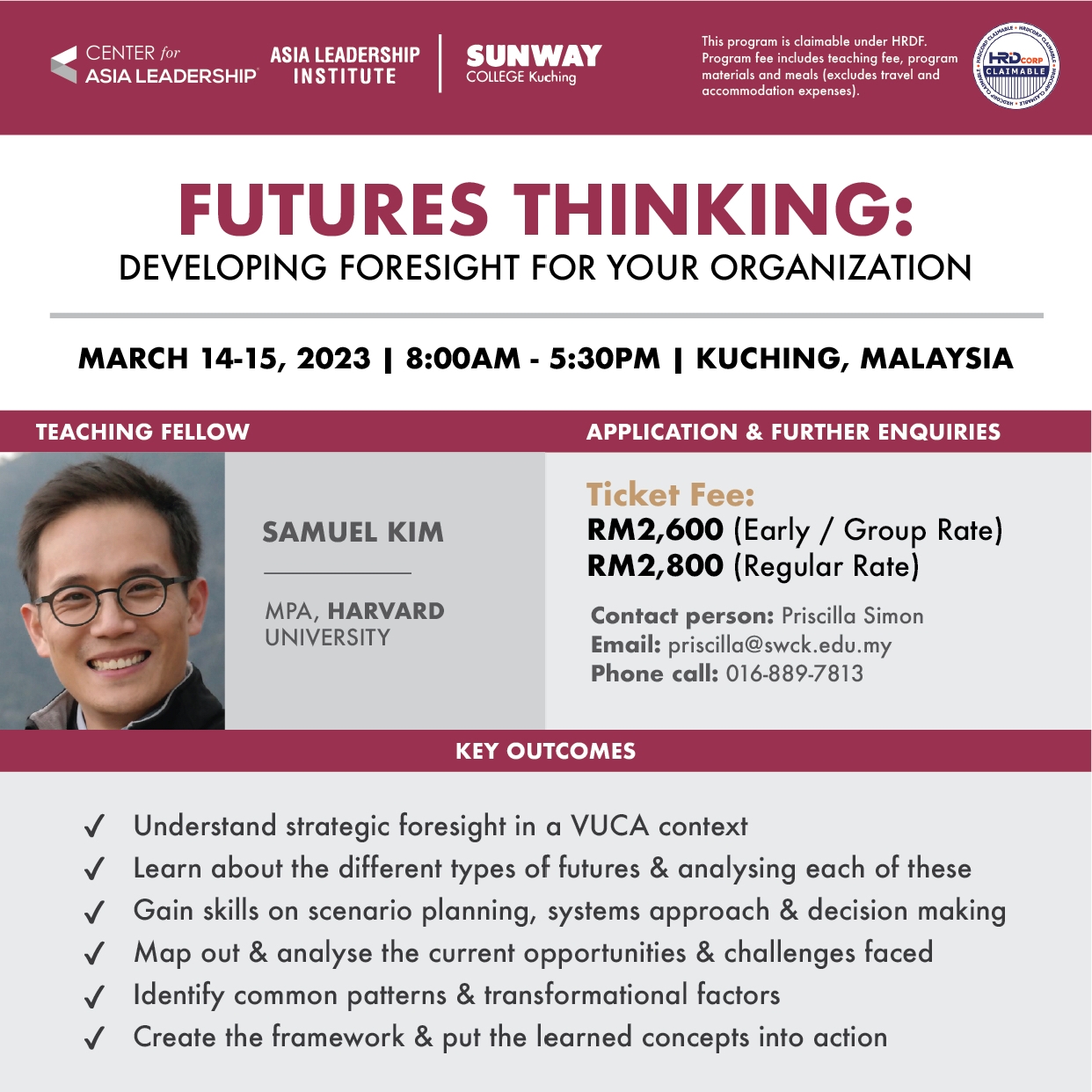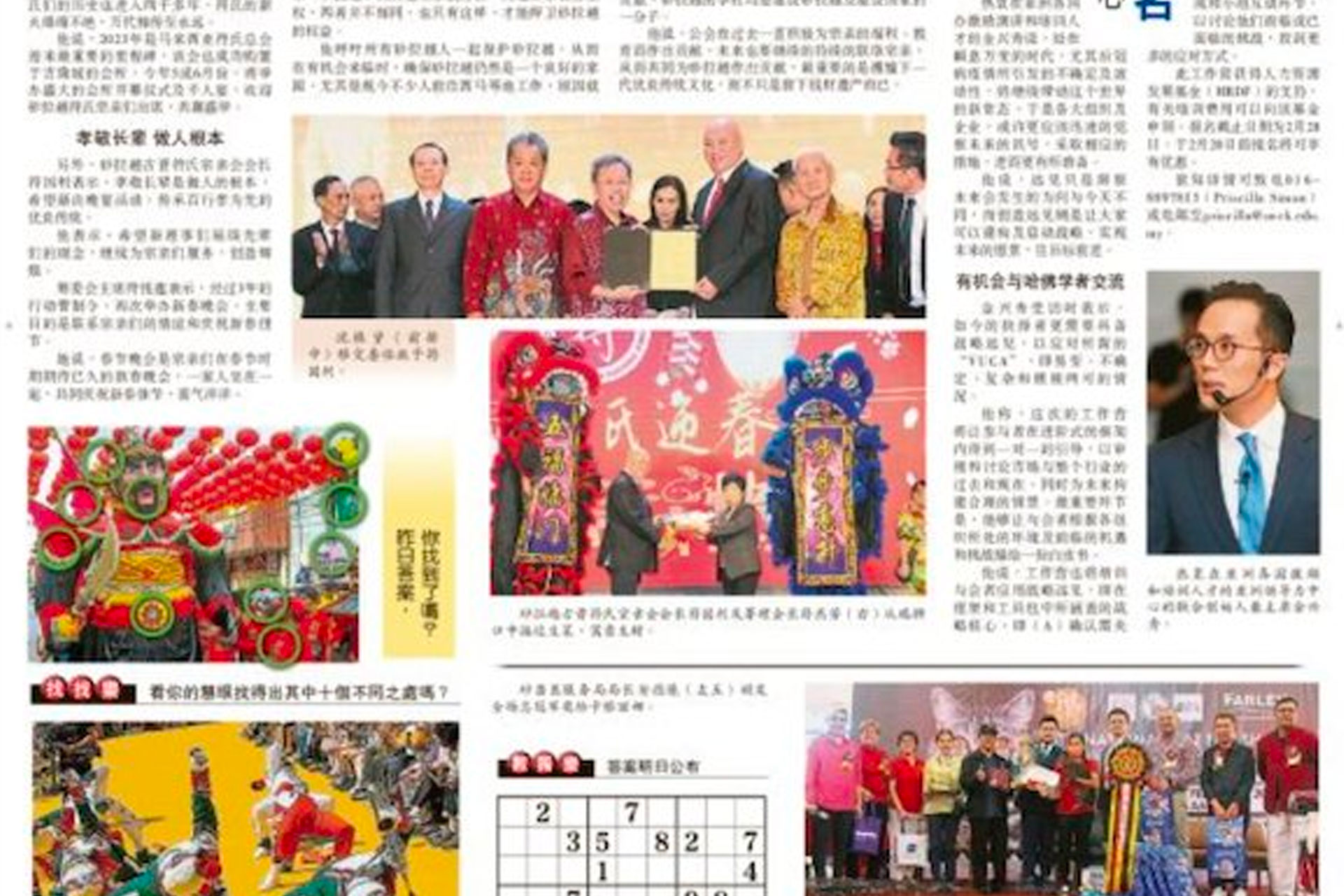Experiencing Asia Through Asia Leadership Trek: Singapore & Malaysia
by Selma Bardakci
The Asia Leadership Trek X made its way to Singapore, then Malaysia after an exciting journey from Mumbai, India. I had the privilege of being part of the Trek as a Center for Asia Leadership Initiatives-Atlas Corp Fellow from Atlas Corp working at the Center for Asia Leadership office in Kuala Lumpur, where I not only accompanied the Trekkers but also had an opportunity to experience new things too.
CAL provides a unique opportunity for decision makers and young leaders to learn more about global trends and current developments with a focus on Asia. One of the most important field study programs that CALI organizes is the Asia Leadership Trek, a socioeconomic and political field study that builds bridges between Asia and the rest of the world. This year’s program covered nine cities in Asia, journeying across Georgia, Azerbaijan, India, Singapore, Malaysia, Korea and Japan.
After my nineteen month experience in Washington D.C., I have spent almost four months in Malaysia and one thing stood out to me: young Asians are determined to utilize new technological developments for developing their nations’ wealth and prosperity. Investing time and energy in innovative solutions, and fostering entrepreneurship is a major focus in the work environment here.
The Trekkers came from diverse backgrounds and focus areas. It was a great learning opportunity for me to attend the Singapore and Malaysia legs of the program. We heard success stories, asked questions and mingled with high officials and decision makers during various meetings. Through this program, participants of the trek got to dive deeply into local issues through engagement and discussion.

Singapore: Small Country, Large Vision
As a former student of international relations, I found that one of the most interesting meetings that we had on the Trek was in Singapore at the Foreign Ministry of Singapore. We had a chance to meet Ambassador at Large, Bilahari Kausikan. Mr. Kausikan mentioned that identities are still fundamental in Asia. Race, language and religion shape the politics of the region, emphasizing that it’s a major challenge to manage all these differences effectively.
The Ambassador also talked about the balance of power in Asia with superpowers like China and India dominating regional affairs while smaller countries like Singapore and Vietnam are constantly evaluating how to stay relevant. He lauded China’s President Xi’s China’s Belt and Road Initiative as the externalization of growth model and the indication of the China first policy.

We were told that defense and national security is a major concern for the country and it has the most technologically advanced and sophisticated military among in ASEAN. The Arabization of Islam in the Asia is seen as a threat, and the movement of extremist terror organizations such as ISIS are monitored.
I realized that the strength of a country cannot be measured by its size alone but how it positions itself strategically and realistically within regional affairs, using its strengths to stay a relevant and important player.

Visiting Universities: Building Bridges between Academia and Industry
The National University of Singapore and Nanyang Technological University is a testament that higher education is valued here. Creating an environment where innovative and entrepreneurial mindsets can develop and confront global challenges is a major motivator behind Singapore’s higher education system.
Both universities attract superior talent and bring top professors from around the world to Singapore to provide quality education. Importance is placed on new university education, as well as bridging partnerships with the business world. The universities’ emphasize in creating leaders instead of churning out graduates or publishing new work. The graduates themselves are conscious of the need for creating new jobs and pursuing work that can create a social impact in the country thus, building bridges between academia and industry is a hallmark of the Singaporean higher education system.

After Singapore, we journeyed to Malaysia to meet with decision makers from different sectors. We heard from different perspectives and explored the country’s social and economical environments. A common thread between Singapore and Malaysia is the importance of diversity. Both countries see their diversity as richness for their societies. Diversity at the workplace or in the community makes for a stronger and more creative atmosphere. People embrace their cultural roots without losing their pride of being a Singaporean or Malaysian. I think this is a crucial attribute for becoming a cohesive and inclusive society.

Refugees in Malaysia: Fugee School
In my country (Turkey), we have received over three million Syrian refugees over the past six years. One of the visits in Malaysia was to the Fugee School in Kuala Lumpur, where we met with refugee children who were given free basic education by a private enterprise. As I am involved with a project In Turkey with Syrian refugees, I admired the Fugee School founder, Ms. Deborah Henry’s vision and support she has given to the refugee children, making their lives better through education. Their stories of resilience captured my heart:
“I’m lucky to be a refugee. Because, if I wasn’t a refugee, I wouldn’t have the courage to try. I can’t change that I’m a refugee, but I can change what I want my life to be”, said one of the girls at the school. This comment coming from such a young person, rendered us speechless and captured the admiration of everyone in the room with her courage and tenacity.

Refugees aren’t officially recognized in Malaysia and many of them have difficulties in accessing social services. There are more than 150,000 UNHCR registered refugees and asylum-seekers here. I admire the fact that even with challenges on an official level, there are still selfless individuals and organizations that work on improving refugees’ lives in their society.

Investing in Youth Development and Leadership
The Malaysian government has a strong interest in investing in the development of the nation’s younger generation and providing them opportunities to improve and build their skills. When we visited NGOs and foundations in Malaysia, it was great to see the government taking a proactive role to create platforms for youth development and leadership.

The design thinking company called, Genovasi exemplified this initiative. There, working professionals learn the design thinking method to create projects for their organizations and communities. We were ushered to participate in different activities to make us understand what design thinking was all about. We learned how the design thinking method changes behaviors and mindsets to find best solutions for projects and problems using innovation and a human-centered approach.

TalentCorp Malaysia was next on our list of visits. It was established in 2011 under the Prime Minister’s Office, and its goal is to help shape Malaysia’s human resources empowerment through various professional development programs for professionals, students, employers, and industry and academia partners. TalentCorp utilizes research on the Malaysian industries’ needs with regards to local and international talents and provides tailor-made programs for students to develop professional skills to match the industry’s needs. The organization also works in tandem with many different partners to stagger the brain drain which is prevalent, actively engages with Malaysian talents living overseas to return and attract foreign talents to come, and contribute to the development of many industries here.


Diversity in Art
The Islamic Art Museum was the cultural part of the Trek in Kuala Lumpur. I enjoyed seeing the beautiful Islamic cultural arts from different parts of Asia. It was an internationally diverse collection about civilizations which embraced Islam with their own dynamics and influences. Looking at different mosques all around Asia, especially the ones from China, it is clear that people adapt and shape their beliefs to match cultural upbringings. I was excited to see that the Selimiye Mosque from Edirne, Turkey among the exhibition. There were also many artifacts from the Ottoman era on display at the museum.


